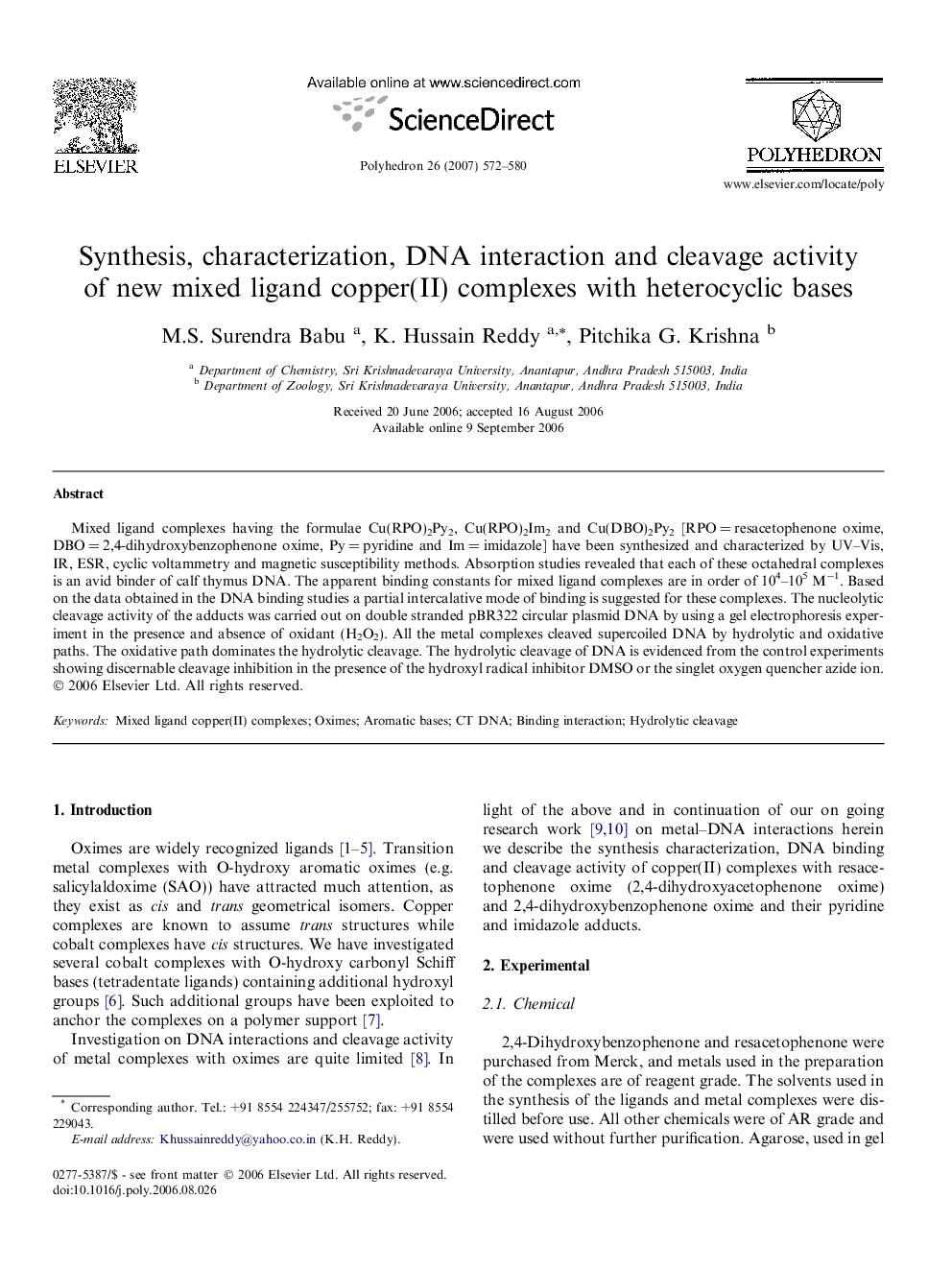| Article ID | Journal | Published Year | Pages | File Type |
|---|---|---|---|---|
| 1335423 | Polyhedron | 2007 | 9 Pages |
Mixed ligand complexes having the formulae Cu(RPO)2Py2, Cu(RPO)2Im2 and Cu(DBO)2Py2 [RPO = resacetophenone oxime, DBO = 2,4-dihydroxybenzophenone oxime, Py = pyridine and Im = imidazole] have been synthesized and characterized by UV–Vis, IR, ESR, cyclic voltammetry and magnetic susceptibility methods. Absorption studies revealed that each of these octahedral complexes is an avid binder of calf thymus DNA. The apparent binding constants for mixed ligand complexes are in order of 104–105 M−1. Based on the data obtained in the DNA binding studies a partial intercalative mode of binding is suggested for these complexes. The nucleolytic cleavage activity of the adducts was carried out on double stranded pBR322 circular plasmid DNA by using a gel electrophoresis experiment in the presence and absence of oxidant (H2O2). All the metal complexes cleaved supercoiled DNA by hydrolytic and oxidative paths. The oxidative path dominates the hydrolytic cleavage. The hydrolytic cleavage of DNA is evidenced from the control experiments showing discernable cleavage inhibition in the presence of the hydroxyl radical inhibitor DMSO or the singlet oxygen quencher azide ion.
Graphical abstractMixed ligand complexes having the formulae Cu(RPO)2Py2, Cu(RPO)2Im2 and Cu(DBO)2Py2 [RPO = resacetophenone oxime, DBO = 2,4-dihydroxybenzophenone oxime, Py = pyridine and Im = imidazole] have been synthesized and characterized by UV–Vis, IR, ESR, cyclic voltammetry and magnetic susceptibility methods. The apparent binding constants for mixed ligand complexes are in order of 104–105 M−1. Based on the data obtained in the DNA binding studies a partial intercalative mode of binding is suggested for these complexes. All the metal complexes cleaved supercoiled DNA by hydrolytic and oxidative paths. The oxidative path dominates the hydrolytic cleavage. The hydrolytic cleavage of DNA is evidenced from the control experiments showing discernable cleavage inhibition in the presence of the hydroxyl radical inhibitor DMSO or the singlet oxygen quencher azide ion.Figure optionsDownload full-size imageDownload as PowerPoint slide
